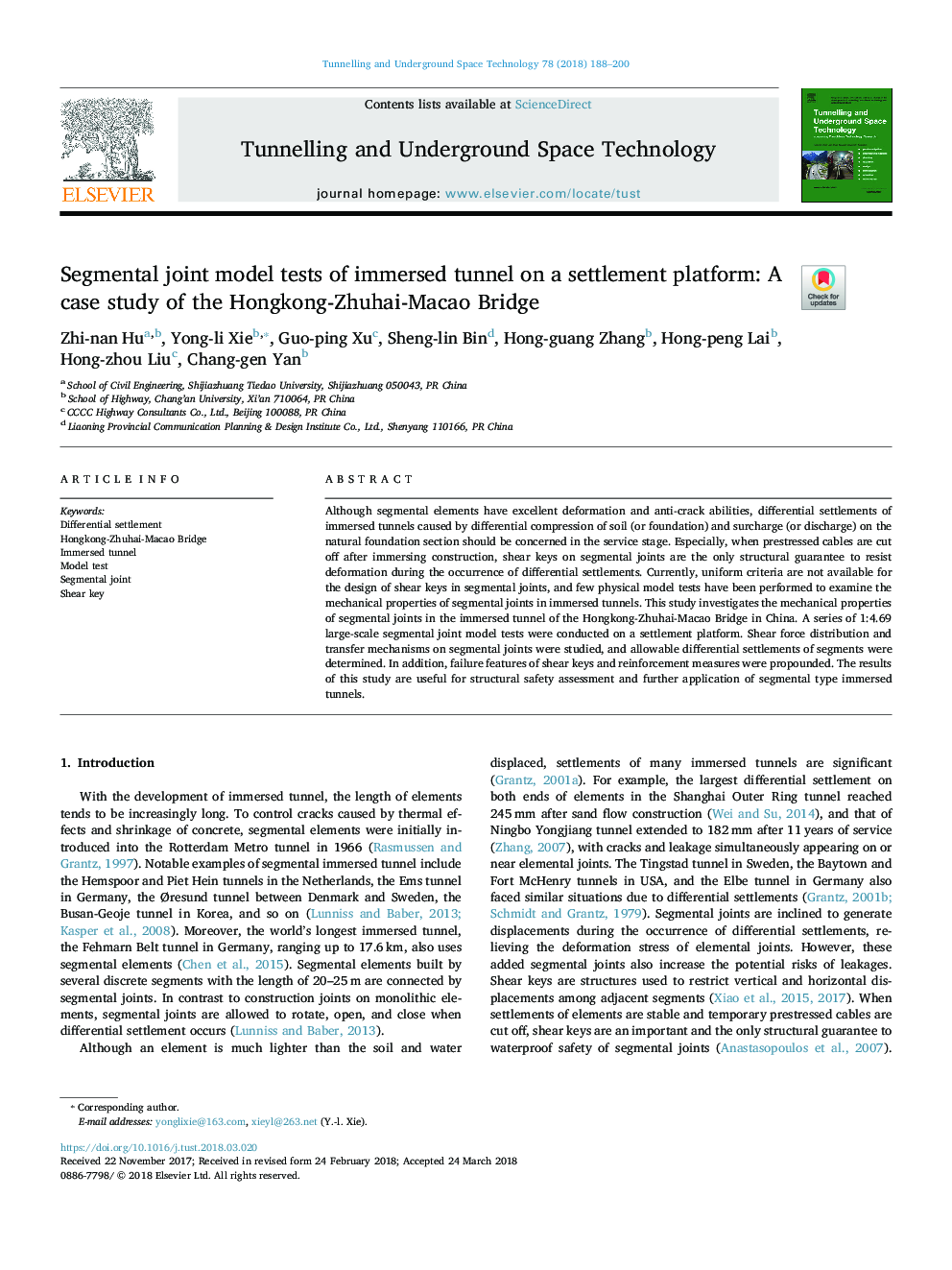| Article ID | Journal | Published Year | Pages | File Type |
|---|---|---|---|---|
| 6782453 | Tunnelling and Underground Space Technology | 2018 | 13 Pages |
Abstract
Although segmental elements have excellent deformation and anti-crack abilities, differential settlements of immersed tunnels caused by differential compression of soil (or foundation) and surcharge (or discharge) on the natural foundation section should be concerned in the service stage. Especially, when prestressed cables are cut off after immersing construction, shear keys on segmental joints are the only structural guarantee to resist deformation during the occurrence of differential settlements. Currently, uniform criteria are not available for the design of shear keys in segmental joints, and few physical model tests have been performed to examine the mechanical properties of segmental joints in immersed tunnels. This study investigates the mechanical properties of segmental joints in the immersed tunnel of the Hongkong-Zhuhai-Macao Bridge in China. A series of 1:4.69 large-scale segmental joint model tests were conducted on a settlement platform. Shear force distribution and transfer mechanisms on segmental joints were studied, and allowable differential settlements of segments were determined. In addition, failure features of shear keys and reinforcement measures were propounded. The results of this study are useful for structural safety assessment and further application of segmental type immersed tunnels.
Related Topics
Physical Sciences and Engineering
Earth and Planetary Sciences
Geotechnical Engineering and Engineering Geology
Authors
Zhi-nan Hu, Yong-li Xie, Guo-ping Xu, Sheng-lin Bin, Hong-guang Zhang, Hong-peng Lai, Hong-zhou Liu, Chang-gen Yan,
